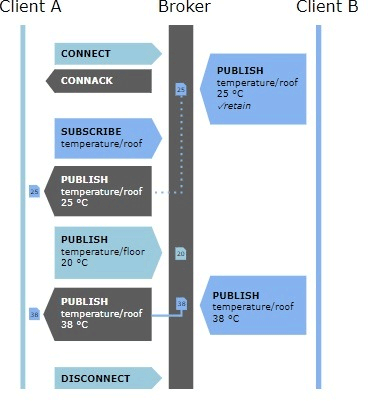MQTT and HTTP: Which protocol is better in the IoT era?
The hypertext transfer protocol (HTTP) has always been the most popular communication tool between client and web server.
However, in the age of the Internet of things, clients are no longer limited to web applications and browsers. In addition, servers are no longer simply 'populated' as computers on the cloud. Managing connected IoT objects requires a completely different approach.
- Learn about DNS Over HTTPS
- The common network protocols today
- Knowledge of TCP / IP network protocols
Why is HTTP obsolete?
Clients and IoT servers are now actual physical objects that need to be connected. They can include a range of sensors to smart home devices and connected vehicles. HTTP was designed for connections in the personal computing era but times have changed.
The IoT era requires a new connectivity protocol to ensure full support for actual physical devices. To solve this problem, Message Queuing Telemetry Transport (MQTT) is gradually becoming popular.
MQTT is lightweight, protocol-based, and uses a publish-and-subscribe model to reuse an established connection for as long as possible. This ensures greater reliability, which is a prerequisite for smart home connections.

Amazon Web Services, Facebook Messenger, and the Microsoft Azure IoT Hub have used MQTT to maintain an always on connection for their users.
There are many reasons why MQTT is an ideal choice for the high availability requirement of a smart home.
Minimum data consumption
Imagine moving to a new town (or country) but not knowing anyone. To find an apartment, you can seek the help of a real estate broker. Such a person not only has a property listing, but also has the necessary connections to reduce your waiting time.
Similar to smart home, the MQTTT protocol uses a vendor like real estate broker to improve its connectivity offering. Different clients will connect to the service using the server, which greatly reduces data consumption. MQTT uses only 2-bit binary headers.

This is in stark contrast to the HTTP model, where web clients have no choice but to communicate directly with the server. If the server is down, you cannot see anything on the screen.
With the MQTT protocol, even if one server is down, it will find you another reliable server to gain access to the connection.
Advanced security
MQTT has a slight advantage over HTTP in terms of transmitted data security. By default, it uses SSL / TLS as a message stream when encrypting the payload.

In contrast, HTTP does not provide any encryption and the data is available in clear text. This makes the protocol vulnerable. You need to provide more HTTPS for the first level of encryption.
Easy to use
MQTT is more related to home automation because it operates in a simple way that is a command and a result. When using MQTT-based voice commands to control home devices, you do not need to be concerned about establishing a connection.

As an end user, you feel comfortable, without worrying about unexpected system problems. In MQTT parlance, this is the user's publishing and registration system.
However, with HTTP systems, you'll have to get used to client or server errors and try to figure out how to fix the problems yourself.
There is a reason many smart devices available online are increasingly providing MQTT support. It has flexibility, anti-counterfeiting, and even someone who has never used IoT products before can work with them easily.
 What is Google Jamboard?
What is Google Jamboard? What is hard reboot?
What is hard reboot? What is Narrowband IoT (NB-IoT)?
What is Narrowband IoT (NB-IoT)? What is Root Certificate? How is it used for online monitoring?
What is Root Certificate? How is it used for online monitoring? Things to know about Powerline Adapter
Things to know about Powerline Adapter What is IGTV? How does IGTV work?
What is IGTV? How does IGTV work?